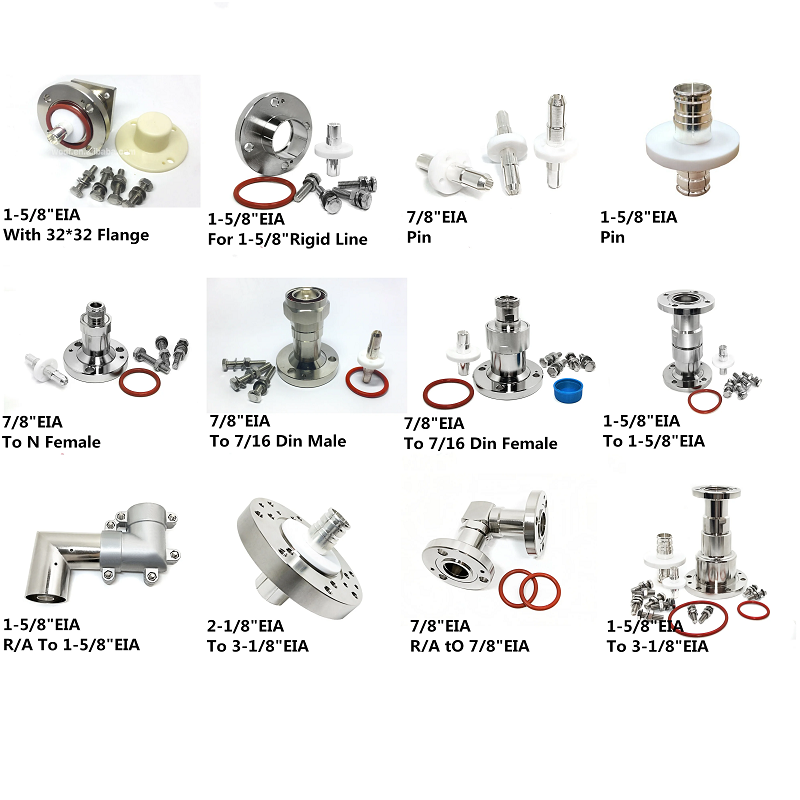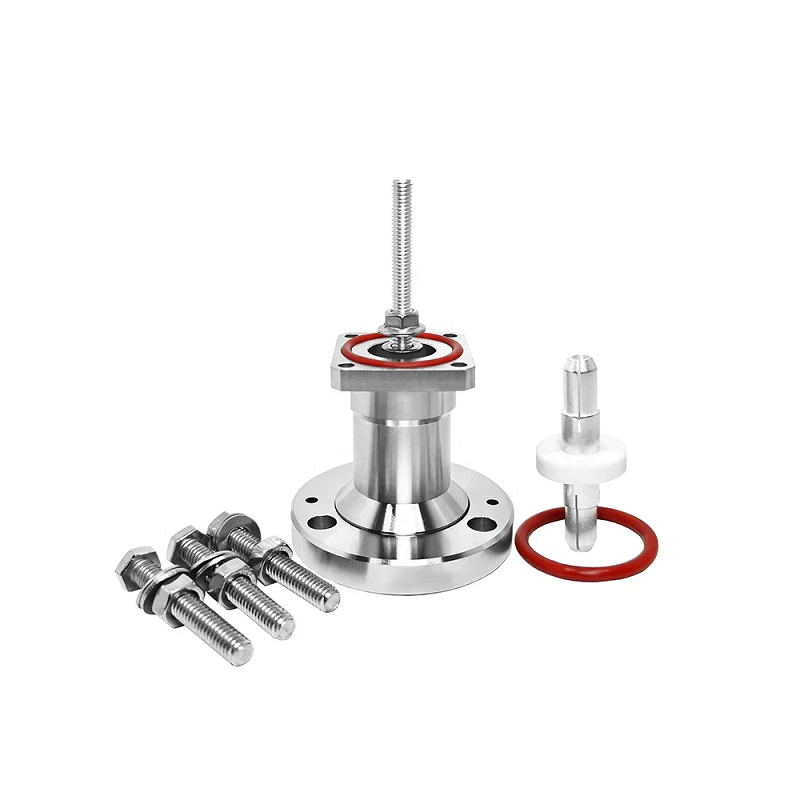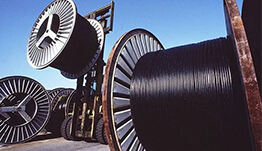Introduction to EIA Flange Connectors
EIA (Electronic Industries Alliance) flange connectors are standardized RF interfaces widely used in high-frequency applications. These connectors employ a flanged mechanical design to achieve low-loss interconnection between coaxial cables and equipment, with compliance derived from MIL-STD-348 specifications. Key features include stable impedance (typically 50Ω/75Ω), high shielding effectiveness (>90dB), and broad bandwidth (DC to 40GHz+), making them critical components in microwave communications and radar systems.

Core Structure and Technical Specifications
1.Mechanical Design
- Flange Plate: Aluminum alloy/stainless steel construction with bolt-fastened axial compression for hermetic sealing
- Contact Pins: Gold-plated beryllium copper spring contacts with <5mΩ resistance
- Insulator: PTFE dielectric support (ε=2.1±0.05)
2.Performance Metrics
ParameterTypical ValueVSWR≤1.15@18GHzInsertion Loss0.3dB/m@6GHzTemperature Range-55℃~+125℃
Typical Applications
- 5G Base Stations: Blind-mate connections between RRUs and antenna arrays
- Satellite Comms: Phase-stable waveguide transitions
- Test Equipment: Calibration reference planes for VNAs

Selection Guidelines
Prioritize derivatives like SMA or N-type connectors, noting thread specifications (e.g., 1/4-36 UNEF) and gender compatibility. Recent IEC 61169-6 revisions mandate ≥3μm plating thickness for IP67-rated variants.
Hot News
-
What is RF coaxial connector? What are the characteristics and applications?
2025-07-01
-
BNC Connector
2024-07-22
-
SMA connector
2024-07-19
-
The difference between BNC connectors and SMA connectors
2024-07-03
-
What are the advantages of anti-interference coaxial cables
2023-12-18
-
Complete Guide to Basic Knowledge of Coaxial Connectors
2023-12-18
-
Why is the anti-interference ability of coaxial cables so strong
2023-12-18

 EN
EN
 AR
AR
 BG
BG
 HR
HR
 CS
CS
 NL
NL
 FI
FI
 FR
FR
 DE
DE
 EL
EL
 HI
HI
 IT
IT
 JA
JA
 KO
KO
 NO
NO
 PL
PL
 PT
PT
 RO
RO
 RU
RU
 ES
ES
 TL
TL
 IW
IW
 ID
ID
 VI
VI
 HU
HU
 TH
TH
 TR
TR
 FA
FA
 MS
MS
 UR
UR
 HA
HA
 JW
JW
 LA
LA
 MY
MY
 KK
KK
 TG
TG
 UZ
UZ
 AM
AM
 PS
PS

